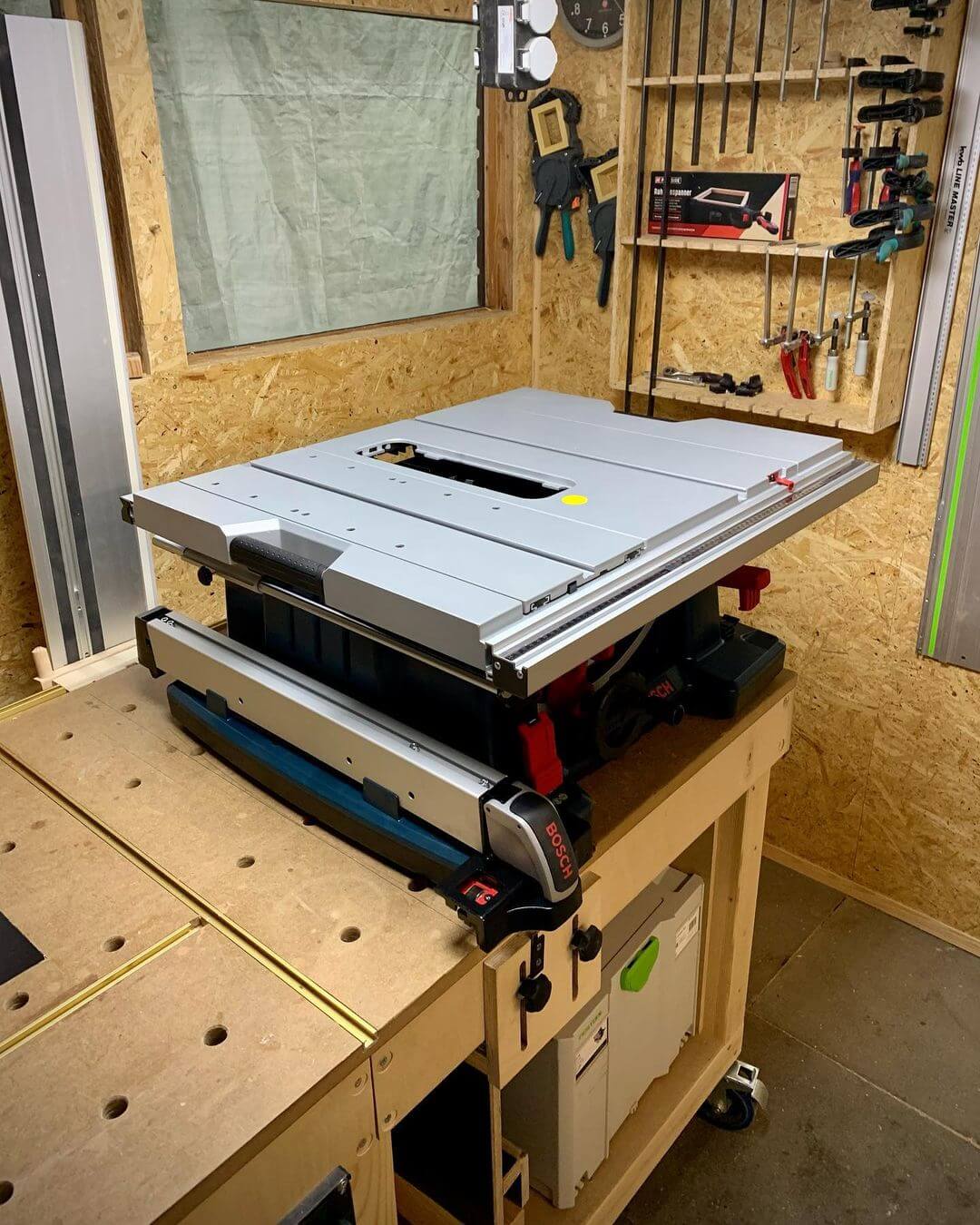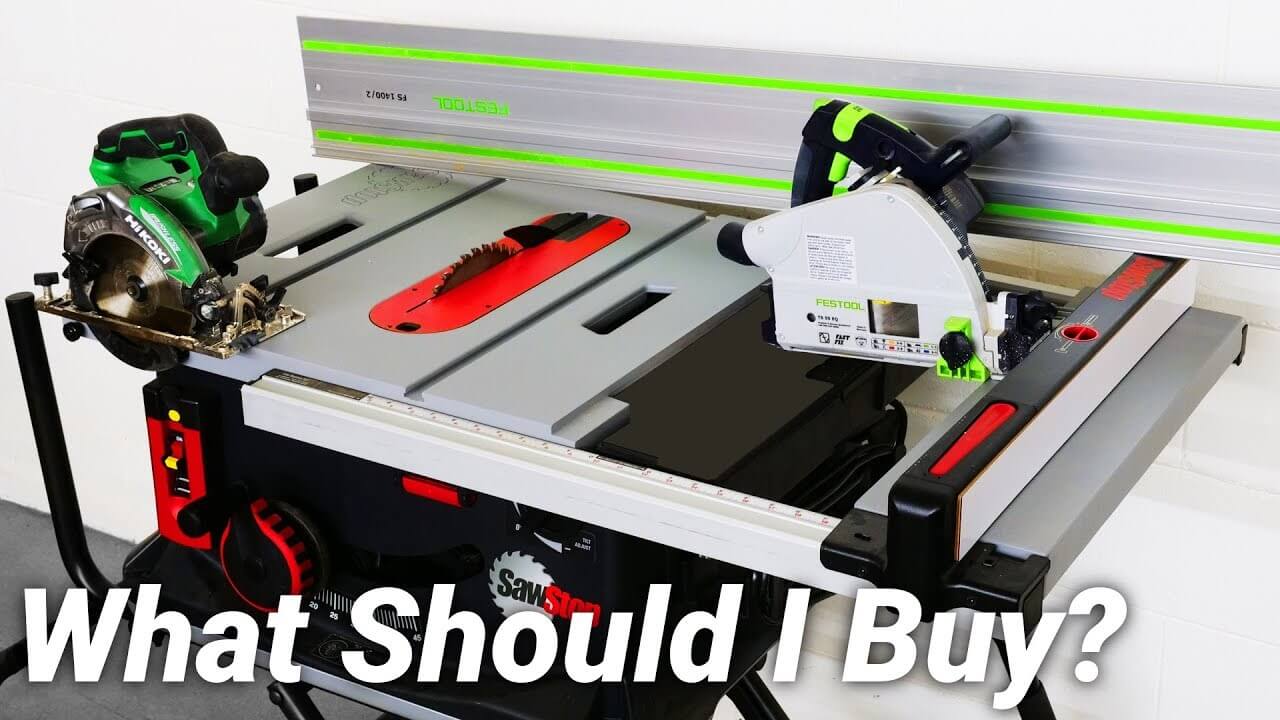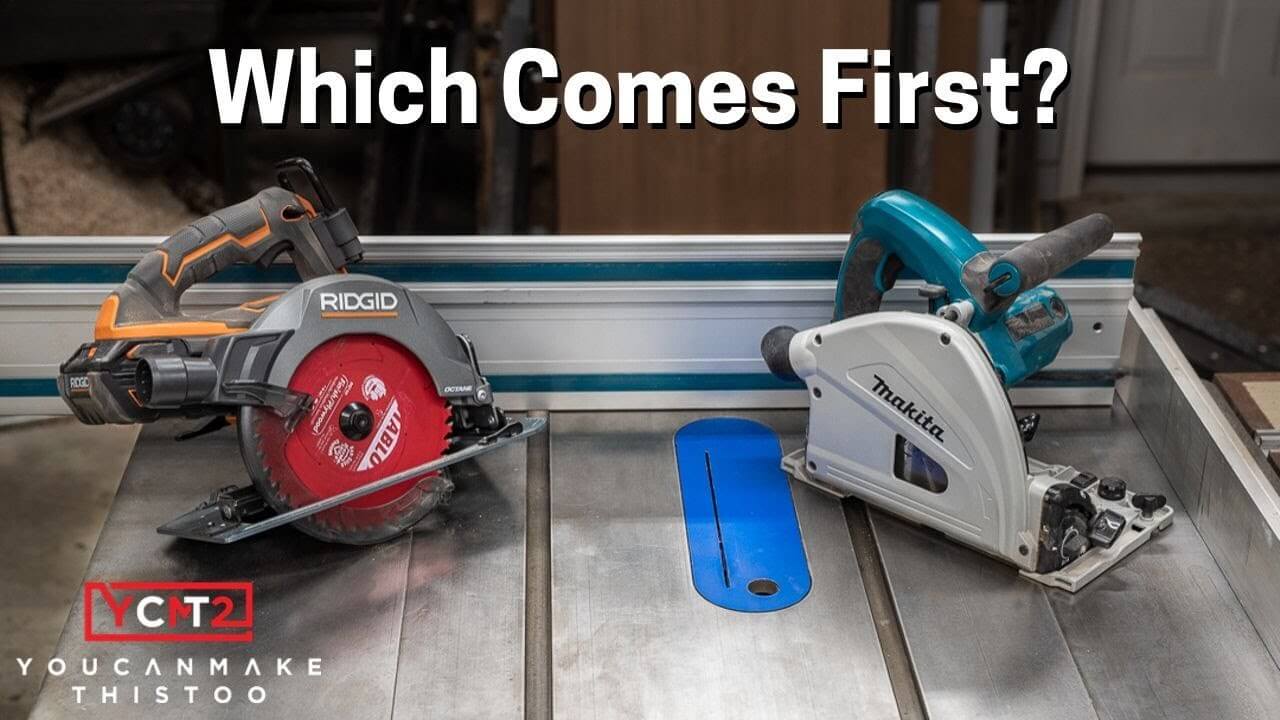Table Saw vs Circular Saw for Beginners
So you have a big DIY project coming up, but you’re not sure if the collection of tools at your disposal will be enough to get the job done?
Maybe you already own a table saw but have started wondering if a circular saw would be more beneficial?
If you’re in a similar position, you’ll know how tricky it can be to decide which is best for a certain job.
Just as there is with every tool, table saws and circular saws have their own specific uses. At the end of the day, you just want a tool that will do the job easily, professionally, and as efficiently as possible.
So let’s take an in-depth look at each saw and compare its pros and cons to decide which comes first in the battle of table saws vs circular saws.
What Is a Table Saw?
Table saws are a favored option for beginner woodworkers as they are so versatile. They deliver precise uniform cuts and are easy to handle making them an ideal choice for those just starting without cutting saws.
As we have briefly mentioned, table saws get their name from their table-like shape. Attached to their bodies is a circular blade that extends out through a centered slot.
Most table saws are used for woodwork and are very easy to use. These allow you to make specific angular and crosscuts for absolute precision.
Table saw’s blades lift above tabletops and allow you to move through the material easily as you cut it. You push the material through the blade, meaning you are in control of the cut’s direction.
What Can a Table Saw Do?
All table saws cut in a straight line which means they have a far greater rip capacity for ripping boards, but most can tilt their saw blade relative to its tabletop. This allows you to cut miter angles in a dead straight line if need be.
It is easy to adjust the blade for more accurate cuts due to its guardrails on either side. Depending on your desired cut size, you can turn and lock the blade in place with the built-in crank.
Another reason you might consider opting for a table saw, apart from them being able to rip wooden boards or sheets of MDF with precision, is that you can also use a table saw to make angle cuts.
While a table saw might not offer the same convenience as a miter saw when attempting bevel cuts, they will still produce a clean and precise cut with the right adjustments. You’re just going to have to tinker around a bit to make angle cuts with a table saw as opposed to making angled cuts with a miter saw.
This is where the likes of a table saw vs track saw tend to differ, as one is used purely for making straight-line cuts, and the other can make just about any cut.
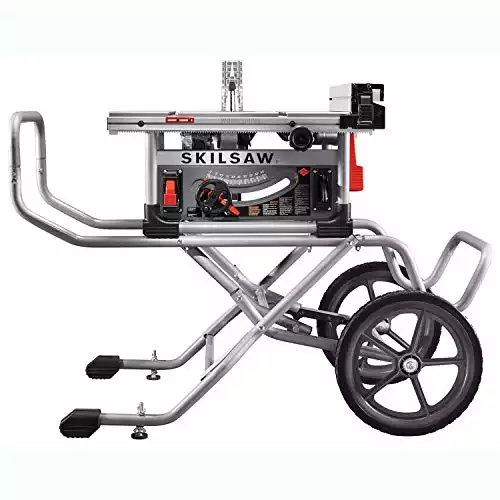 Skilsaw SPT99-12 10" Worm Drive Table Saw
Skilsaw SPT99-12 10" Worm Drive Table Saw
- A heavy-duty worm drive table saw engineered to absolute perfection by the legendary SKILSAW®
- Equipped with a powerful Dual-Field™ motor that can operate under excessive load for extended periods.
- With a 30-½ inch rip capacity, and 3-⅝ in. depth of cut, you'll be able to tear through darn anything with precision.
- Super lightweight yet heavy-duty steel design that weighs only 14 lbs. is very mobile with its 16-inch rubber wheels.
What Is a Circular Saw?
Circular saws differ as they use a handheld design that is attached to a rounded blade.
Typically used in professional environments, circular saws are either powered by an electric cord or batteries.
Its motor drive has a belt attached to the blade, which rotates, making the blade rotate when powered.
What Can a Circular Saw Do?
Circular saws make very deep and strong cuts without any fuss, and they can be used on a variety of materials such as wood, metal, and plastic.
The mobility of a circular saw makes it a very popular choice amongst carpenters. They are lightweight for easy portability and holding.
On the other hand, these saws are not the best choice for novice woodworkers as it can take some time to get used to using them.
Given that circular saws drive with a lot of power, extra care needs to be given when operating one. Hands need to be steady and in place to hold the saw firmly for a precise cut.
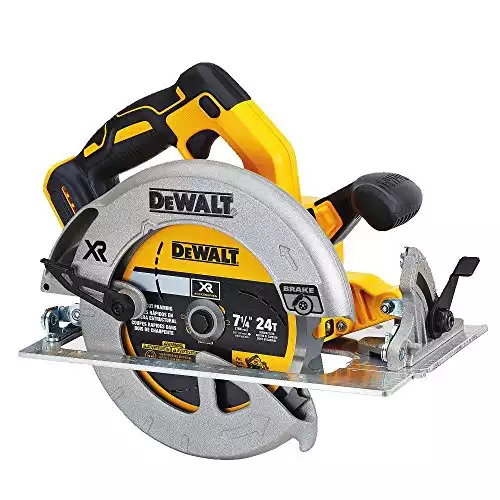 DEWALT DCS570B 20V MAX 7-1/4-Inch Circular Saw
DEWALT DCS570B 20V MAX 7-1/4-Inch Circular Saw
- Corded performance from a cordless circular saw that cuts any wood material with absolute ease.
- Equipped with a high-quality brushless motor that delivers 5200 RPM while maintaining speed under load.
- Equipped with a 7-1/4 inch blade that provides 2-9/16 inch depth of cut capacity for ripping larger boards.
- Bevels up to 57° for greater versatility allowing you to tackle difficult tasks effectively & precisely.
Ideal Applications: Table Saws vs Circular Saws
To consider which is the best, we need to look at the range of use for both table saws and circular saws.
Table saws are superbly efficient. Crosscutting and ripping boards are simple for these machines. As long as the fence is set and positioned correctly, it should be easy to cut with a table saw.
One drawback of a table saw is its size. It is not really that portable and usually needs some sort of workshop to operate one effectively. They can also be quite pricey, but that is typically down to their bulk and the options they provide.
Table Saw vs Circular Saw for Beginners
Circular saws are great when it comes to ripping long boards quickly. Although, when it comes to both accuracy and speed, a table saw will be the better option for ripping.
There are a few steps to take to get the perfect straight cut with a table saw as opposed to making a straight cut with a circular saw. Unless you’re using a track saw, there is more of a lengthy setup required to make long straight cuts with a circular saw.
When attempting a long straight cut with a circular saw, it is recommended you use a speed square to ensure standard 90-degree crosscuts.
When making a similar type of cut with a table saw, you’ll just have to measure the length you want your cut and mark it off with the square. You should be able to position your blade and use the square as a guide against the saw’s fence.
With a circular saw, you’ll need a homemade jig which comes in handy as acts as a fence to get straight rips at any length. This takes more time and requires a little more skill and patience in comparison than when using a table saw.
In short, if you’re a beginner looking for a more versatile saw, a table saw requires less setup time and is a better all-purpose saw for your workshop.
What Materials Can Be Cut With Table Saws and Circular Saws?
Before choosing a table saw vs a circular saw as your new preferred power tool, it is important to know what kind of materials you can cut with each.
Table Saws
Table saws can cut certain materials such as plywood, softwood, hardwood, plastic, aluminum, and brass sheets. You shouldn’t attempt to cut all of the above with a standard crosscut blade unless you enjoy burning through blades and money.
Ideally, if you’re going to attempt cutting any metal with a table saw, you will have to change the blade to a ferrous or non-ferrous metal cutting blade. The blade of choice will depend entirely on the material you work with.
When it comes to lumber, things get a lot less complicated. If you want to cut a series of 2” x 4” in half, table saws are the ideal choice. Long cuts that separate a piece of wood with the grain is called a rip cut.
Table-saws can also perform crosscuts that are perpendicular to the grain of the wood at a rapid pace.
Most saws cannot perform rip cuts with as much accuracy as a table saw, making them a popular tool for this particular job.
Table saws are perfect for cutting long or wide pieces of material as these can easily rest on the tabletop of the saw. This prevents any need to hold the material when you are cutting through it.
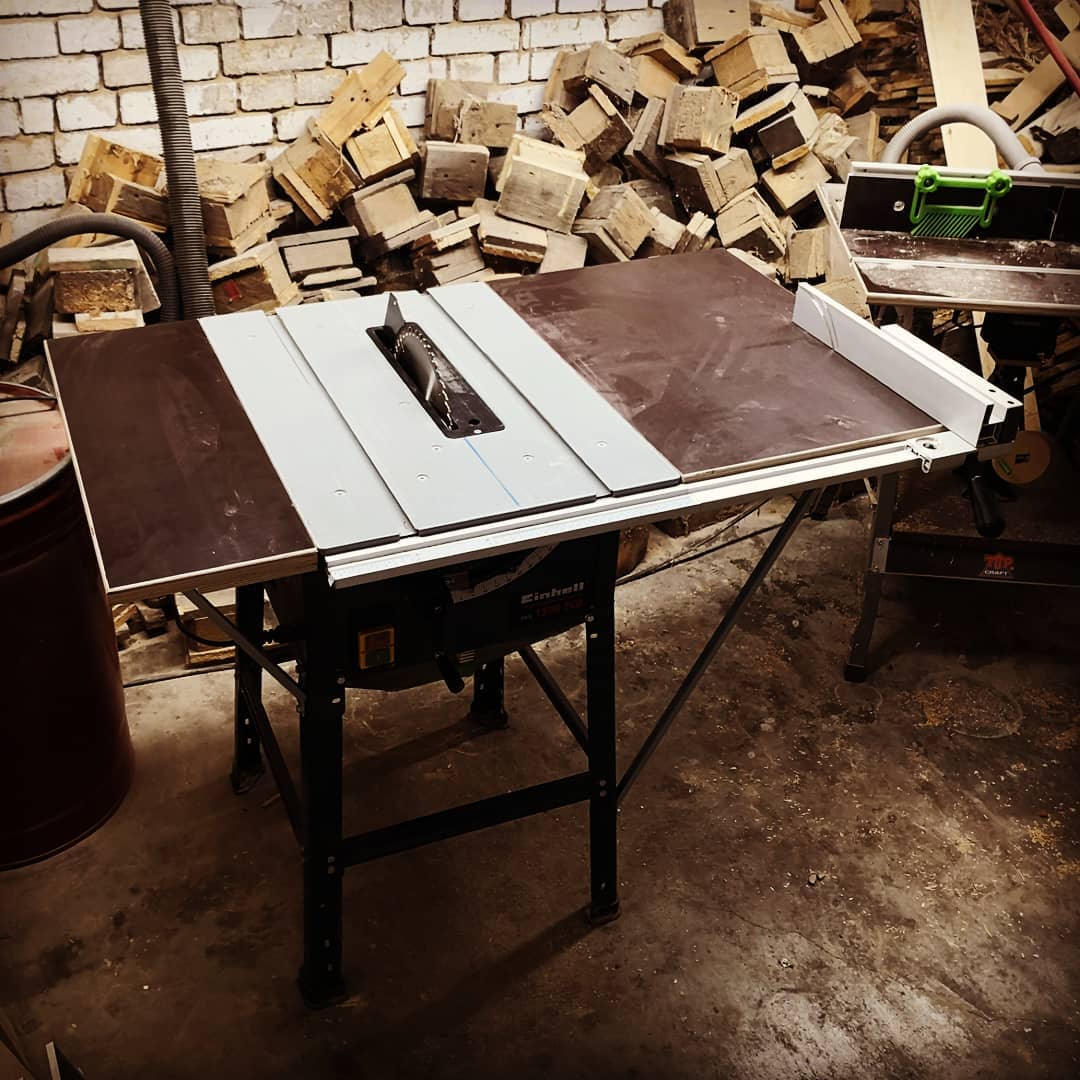
Circular Saws
If you have the right blade attached, you can use a circular saw in a wide range of applications, making a circular saw a great starter option for beginner woodworkers.
These saws can come in a range of sizes, from large, solid saws to mini versions for smaller pieces of material.
Circular saws can cut through concrete and concrete blocks, making them a favorite for masonry work. When operated at a low speed, circular saws can also cut through metal (with the right blade attached) or any plastic type.
Circular saws are also very convenient as you can change or sharpen the blade when required. The one main benefit circular saws have over table saws is their mobility.
You can easily stuff a circular saw in your tool bag and venture out to a job site, making them an ideal power tool for contractors on the go.
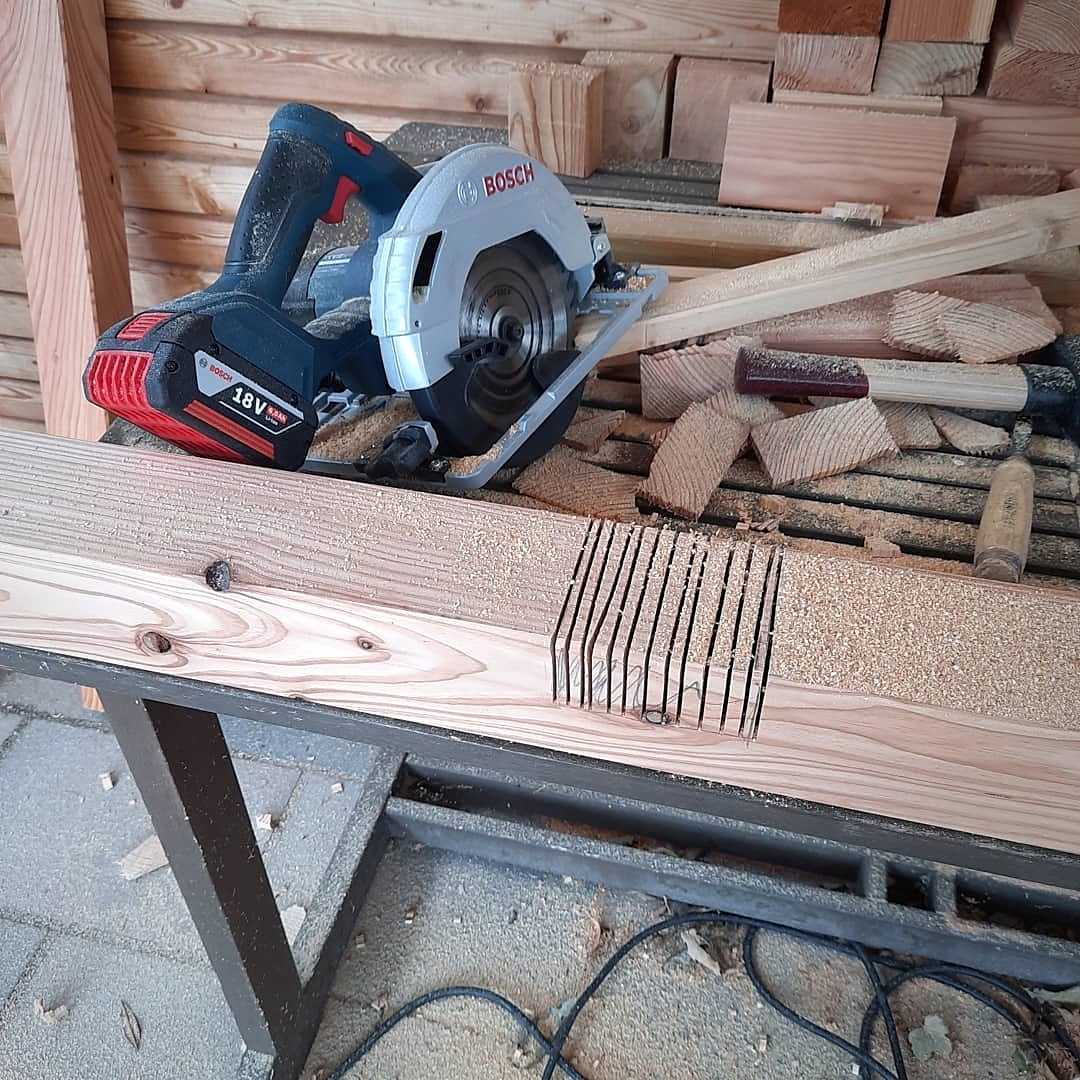
Table Saw Vs Circular Saw: Main Differences
Here are some of the main differences you will find in the table saw vs circular saw debate. Knowing these differences and the pros and cons of each can help you decide if a table or circular saw would be better for your job.
Portability
As you can see, each saw has its pros and cons. The main difference is the portability of each. Table saws are big, heavy, and very hard to move around.
Circular saws are lighter, smaller, and far more portable. They can also be used as a table saw if needed, while table saws can’t work as circular versions.
Cutting Capacity
Both table saws and circular saws have just about no size limit to their cutting capacities. However, a table saw can become difficult to control if a piece is too long to cut.
Also, if you need to rip a piece of board precisely, you’ll have to use a tracking guide such as a long piece of plywood or a circular saw.
The Cost
Circular saws are more affordable than table saws but don’t tend to last as long.
Nonetheless, with proper maintenance, both tools should last a good amount of time.
Cut Accuracy
Table saws are typically better at offering dead straight cuts. Its circular blade makes it easier to handle the saw, along with judging the depth and length of your desired cuts.
Circular saws can become weak in your hands, making mistakes far more likely.
Table Saw and Circular Saw FAQ
If you still have questions regarding a table saw vs circular saw and which one is most appropriate for the job? Read on for the answers to some of the more commonly asked questions.
Which Table Saw Is the Best for Home Use?
Some of the more effective and powerful table saws ideals for home use include the DeWalt DWE7491RS and the Bosch 4100-10.
The DeWalt listed comes in as the best table saw for home use overall because it provides you with the perfect combination of power and performance.
The Bosch has an impressive gravity-rise frame allowing you to modify the height as needed. If you are looking for a cabinet table, then the SawStop is quickly becoming a popular option and boasts of high performance.
What Is the Difference Between Table Saws and Miter Saws?
The biggest difference between a table saw vs miter saw is the versatility factor. A table saw proves to be much more versatile because a miter saw can’t cut larger pieces of wood.
Overall, a table saw can make almost any cut a miter saw can make. Plus, dollar-for-dollar, there isn’t much difference at checkout if you’re going with a high-priced miter saw or a benchtop table saw.
The only determining consideration when choosing between a table saw and a miter saw should be space. Table saws will take up far greater space in your workshop than a miter saw will.
What Is the Difference Between a Circular Saw and a Skill Saw?
When talking about a circular saw and skill saw, you will find that a circular saw is simply a broader term for a tool category. When you speak of circular saws, you can be talking about everything from miter saws to table saws.
Every skill saw can be considered a circular saw. However, not every circular saw is considered a skill saw. A circular saw is most commonly used for making cuts in a straight line on lumber. It is a useful addition to any DIYer’s arsenal.
Overall, there really is no difference between a circular saw and a skill saw. It really just comes down to verbiage. A skill saw is commonly referred to as a Skilsaw, which the SKIL company produces.
Can You RIP With a Circular Saw?
A table saw is usually the better choice for ripping lumber, but if you don’t have a table saw and your rips don’t have to be precise, you can use a circular saw. Choose the right platform, and clamp the circular saw to the platform.
Make a reference to the cut, and then adjust the circular saw to the appropriate width. Adjust the blade, so it is parallel to the face of the platform. Adjust the blade’s height and readjust the parallel. You can then begin to rip your narrow board.
Why Type of Blade Do You Need for a Circular Saw?
A standard circular saw blade can be used to cut wood or wood composites. The number of teeth the blade has determined the speed, type, and cut finish. Fewer teeth cut much faster, while more teeth can create a much finer finish.
What Type of Blade Do You Need for a Table Saw?
The blade types for a table saw are determined by the blade’s teeth’ shape or grind. If you will be doing joinery work, then a 50-tooth all-purpose blade is what you need.
For cutting MDF materials, choose a 50-tooth to the 80-tooth blade. Anything 60-tooth and up allows for better cuts if you are working with denser materials. Plastic laminates require an 80-tooth crosscut blade.
Lastly, when it comes to either circular saw blades or table saw blades, the one blade you do want is a sharp one. That’s why you should be checking and sharpening your table saw blade or circular blade when need be.
How Accurate Is a Table Saw?
When properly set, and with a high-quality Diablo blade attached to it, a table saw can prove to be incredibly accurate.
We recommend you go with the SKILSAW SPT99-12 reviewed above for the best accuracy.
It is lightweight but still houses a powerful motor that can tackle most, if not all, woodworking jobs. Plus it’s a great starter option for those on a budget, but still seeking a top-notch table saw.
What Is the Best Circular Saw for Cutting up Floorboards?
When cutting floorboards, you need something that can cut the tongue before you lift the board. A circular saw is ideal. It will also leave you with a clean edge while cutting through hardwood very easily.
If You Were an Average Homeowner, Which Saw Would You Want First?
If you are a homeowner who will be making long and straight cuts, you may want to choose a circular saw or even consider buying track saw. It is good for a range of uses around the home, including general woodworking jobs.
However, the table saw is also another efficient tool, that if used safely, a table saw will most certainly make short work of both crosscutting and ripping boards.
A table saw is not going to be as portable as a circular saw due to its size. It really comes down to what kind of jobs you have at home. Once you determine that, you can decide which saw would be the best first purchase.
In Conclusion
It is hard to say which is the outright winner between the table saw and the circular saw.
Depending on the material you need to cut and the way it needs to be cut will require each tool at different times. Each has unique designs that make them stand alone in their uses.
The circular saw has a wider range of uses. With practice, you should be able to do anything with this type of saw. There’s also its added bonus of easy portability that helps it stand out.
If you’re a beginner, table saws are the way to go. They will help you get precise cuts and are highly convenient if you have enough space.
If you had to choose between the two, the circular saw is probably recommended for its affordability and portability. Invest in a quality model, and you’ll be cutting with absolute ease.

